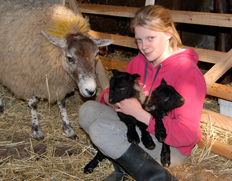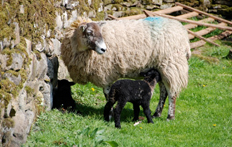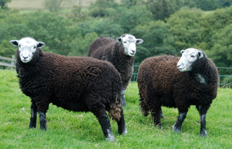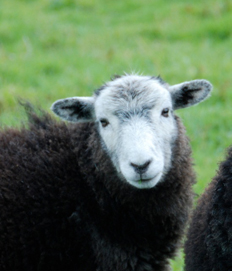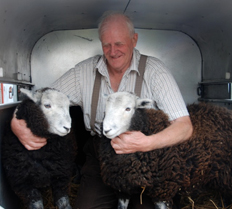THE SHEEP TRUST PROTECTS HERITAGE SHEEP BREEDS
13 year old yorkshire shepherdess helps The Sheep Trust
10 years on from FMD, the work of The Sheep Trust continues, Channel 4 News.
Press release: Going home – ten years on
Heritage Sheep Breeds, such as the Herdwick, are farmed commercially and are not rare. But because they are geographically concentrated in certain UK regions they become at risk when their homelands are hit by disease. This became tragically evident during the 2001 FMD epidemic, when one of the worst affected areas was Cumbria, home of the Herdwick breed. At the height of the crisis, tens of thousands of these sheep were being killed every week and valuable breeds and bloodlines were suddenly in danger of disappearing altogether.
In response to the crisis, The Sheep Trust organised emergency teams of vets and scientists to collect sperm and embryos from vulnerable sheep breeds, and conserve the important genetic resources frozen in a Gene Bank.
After ten years of storage, the Trust took the decision to use some of the germplasm for the first time, to test its viability as a route to restoring lost genetic diversity. Herdwick embryos were implanted into commercial mule ewes that acted as surrogate mothers, lambs were born earlier this year, were raised by the Mules in Yorkshire, and cared for by a 14 year old sheep farmer, Evie Church.
All has gone well since April, and now the lambs have been taken home to the Lake District by Professor Dianna Bowles, founder and Chair of the Trustees of the Sheep Trust. Dianna said ' It is great to be able to return the lambs to the Herdwick flocks and to two of the many breeders who worked with us in 2001.'
'Gowie Grave and Margaret Gass have each bred and farmed Herdwicks on the western fells of the Lake District for more than 70 years. The lambs were conceived in such dreadful times, but now both Gowie and Margaret are delighted to have the opportunity of rearing the young gimmers alongside their other Herdwicks'
Britain’s Heritage Sheep Breeds, although badly affected, did survive the carnage of 2001 and today they are in a safer position than before, largely due to the work of the Sheep Trust. As well as providing the safety net of the Heritage Gene Bank, the Sheep Trust’s research has proved just how geographically vulnerable these breeds are. For example, 95% of Herdwick sheep have been shown to be located within just 23km of Coniston.
Informed by the Sheep Trust’s research, Defra's specialists have recommended that geographical concentration should be reason enough to have a sheep breed on the “breeds at risk” register. The register could provide improved legal protection in the possible advent of another disease crisis.
These Herdwick lambs are from the Heritage Gene Bank. Mule ewes were used as surrogate mothers of Herdwick embryos from ewes of cumbrian farmers. The Mules gave birth to the Herdwick lambs and looked after them until August when the lambs were returned to their original breeders in cumbria. The first photographs show a Mule ewe, with Evie Church holding the Herdwick lambs recently born. The later photographs show the lambs just before being taken to cumbria from yorkshire. The final photograph shows one of the breeders - Gowie Grave holding his lambs that were concieved from a ewe of his flock in 2001.
